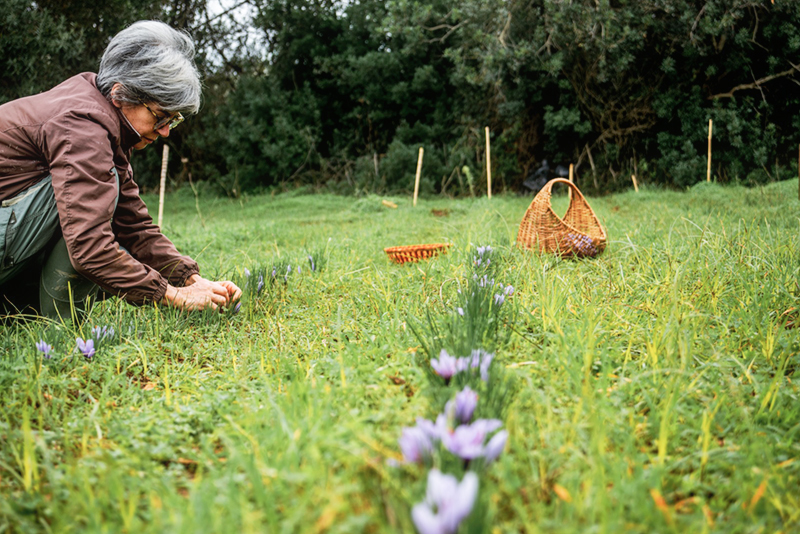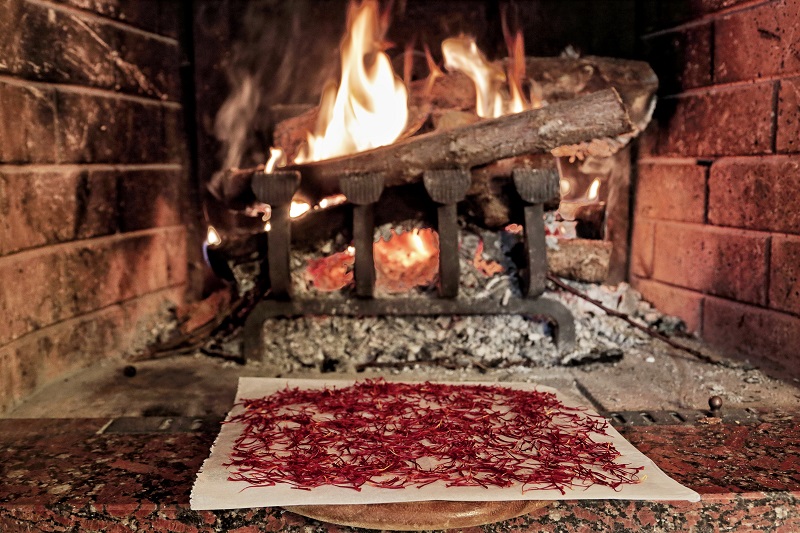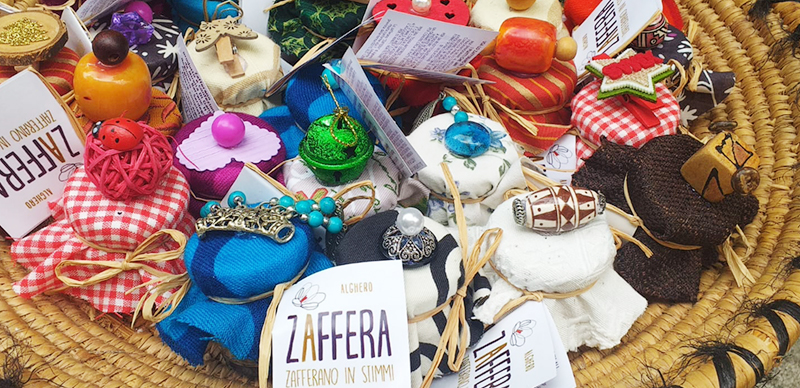The crocus sativus (saffron) is grown in open fields .
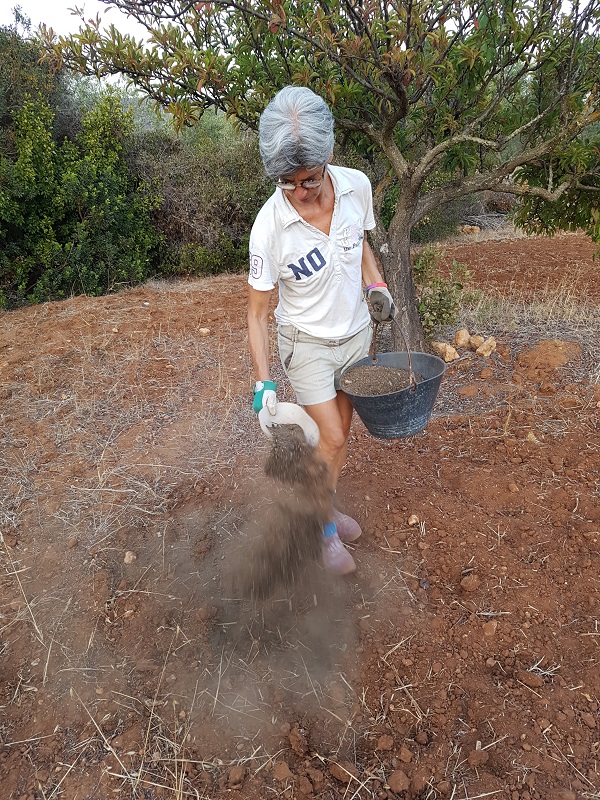
Preparing the site
The soil is tilled, prepared, and left to rest from November to August, when it will receive the corms as they are transplanted. Grain legumes (fava beans, chickpeas, etc.) are used to enrich the soil with nutrients before the saffron is planted. Weeds are controlled through hand hoeing rather than using chemicals. All of this must be done in autumn, before and/or after flowering, and in spring.
Removing the corms
In June, the corms must be transplanted from where they have been growing to the prepared field by uncovering the furrows and removing the corms, which have already reproduced.
Cleaning and selecting the corms
The corms that have been removed are brought to a cool, dry location to be cleaned and selected. Cleaning requires removing the external tunic, leaving the inner ones intact. The corms are then immediately divided by size.
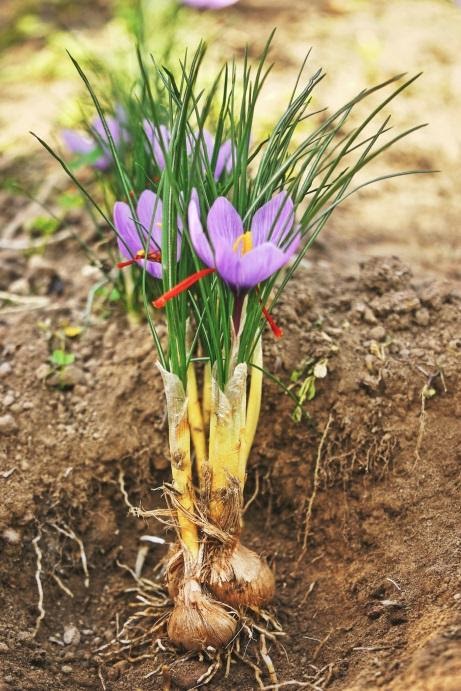
Transplanting the corms
Corms are transplanted in August.
They must be planted neither too deep nor too shallow, with the tufts of leaves pointing upwards.
Saffron corms are planted using a “row system,” ideally spaced 30 centimeters apart.
Dig holes in the first row and fill each with a corm.
While digging the holes in the second row, use the soil removed from those holes to cover the corms planted in the first row, and so on.
Keep the rows high for proper drainage and ventilation. Create a block of rows and leave enough space for a pathway between the blocks to be able to walk easily through the saffron field to weed and harvest.
Harvest
Saffron is harvested every morning at dawn – before the sunlight causes the flowers to open – throughout the entire flowering stage, between mid-October and mid-November. The flowers are harvested by hand and put into wicker baskets.

Harvesting the saffron threads
The threads are harvested by separating the stigmas from the stamens and the bell-shaped flowers. The work must be done by nightfall on the same day the flowers are harvested. It’s a magical moment where manual work and interpersonal relationships come together.
Drying
Drying reduces the initial weight of the stigmas, making them into the spice, and must be done the same day as the harvest.
The stigmas are carefully placed onto wooden boards lined with parchment paper and put near coals to dry slowly until they break easily and cleanly. Drying systems: sunlight or an electric dehydrator. With the latter system, the temperature of the heat source should be between 20 and 45°C.
Packaging
Saffron must be packaged carefully in containers that will not damage the product externally.
The glass jars used prevent damage and alterations during transport and storage. The jars contain 0.25g, 0.50g, 1g, 2g, or 5g of saffron and are labelled as per the standard in force.
Weeding After the harvest, the field is cleared and weeded manually or using small tools to keep the corms healthy.




